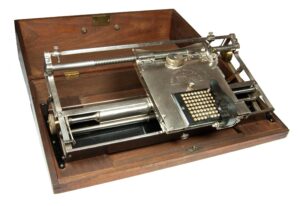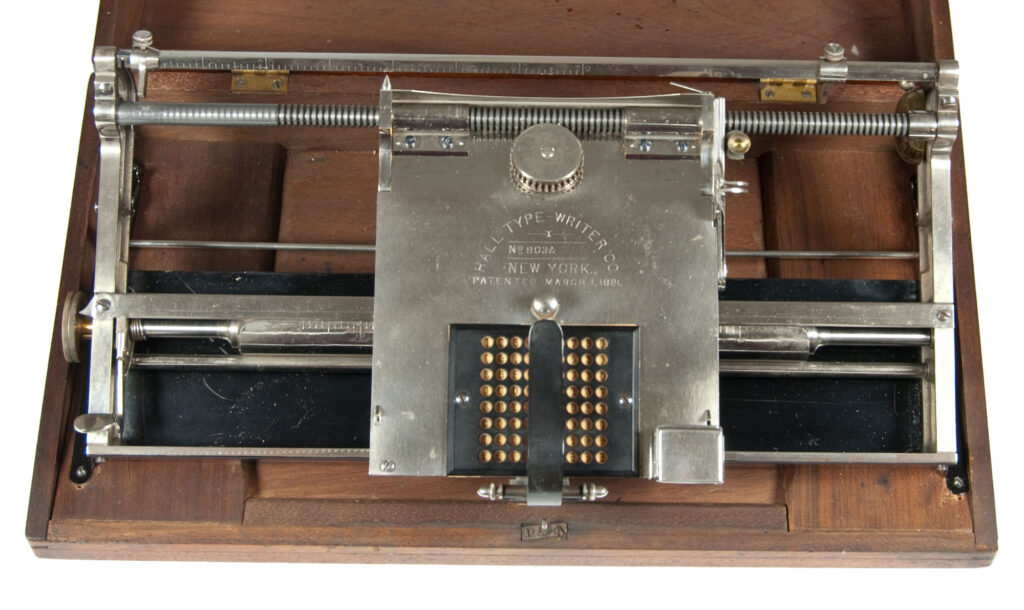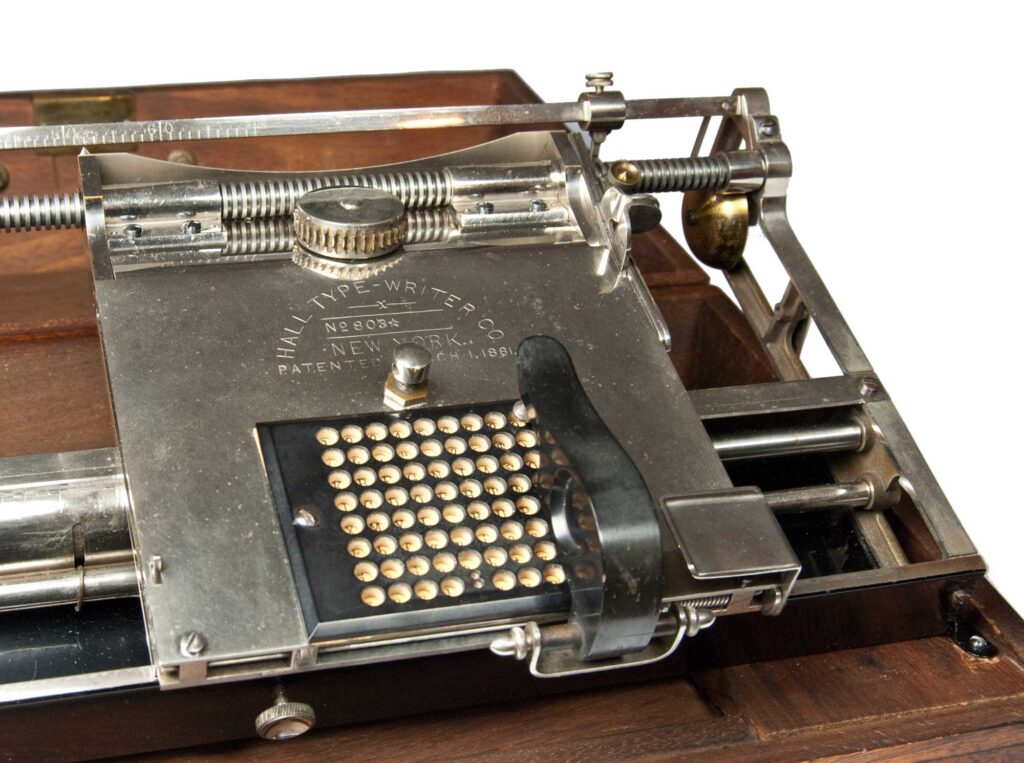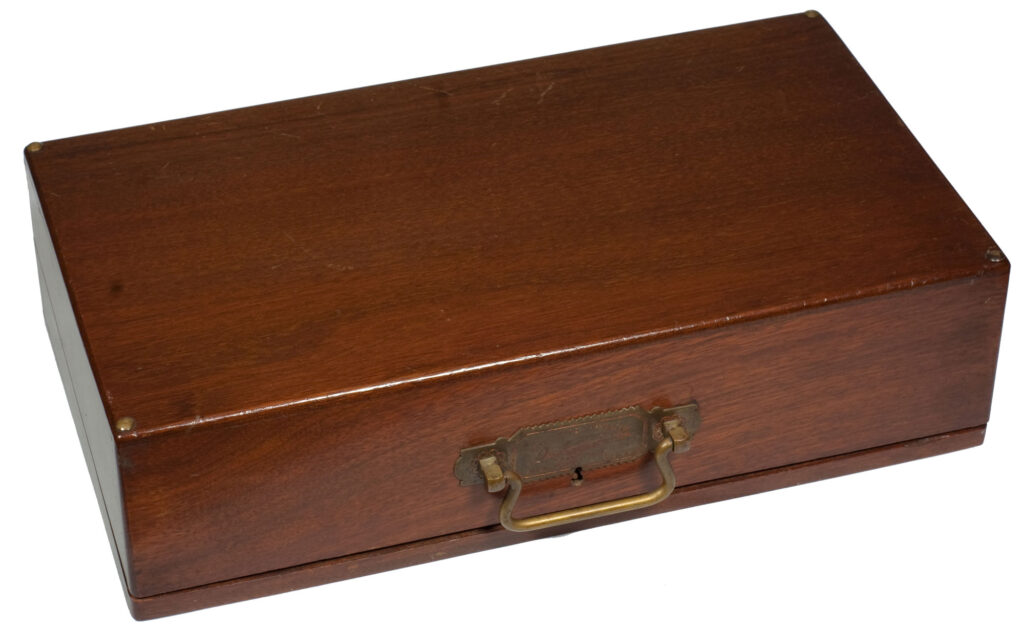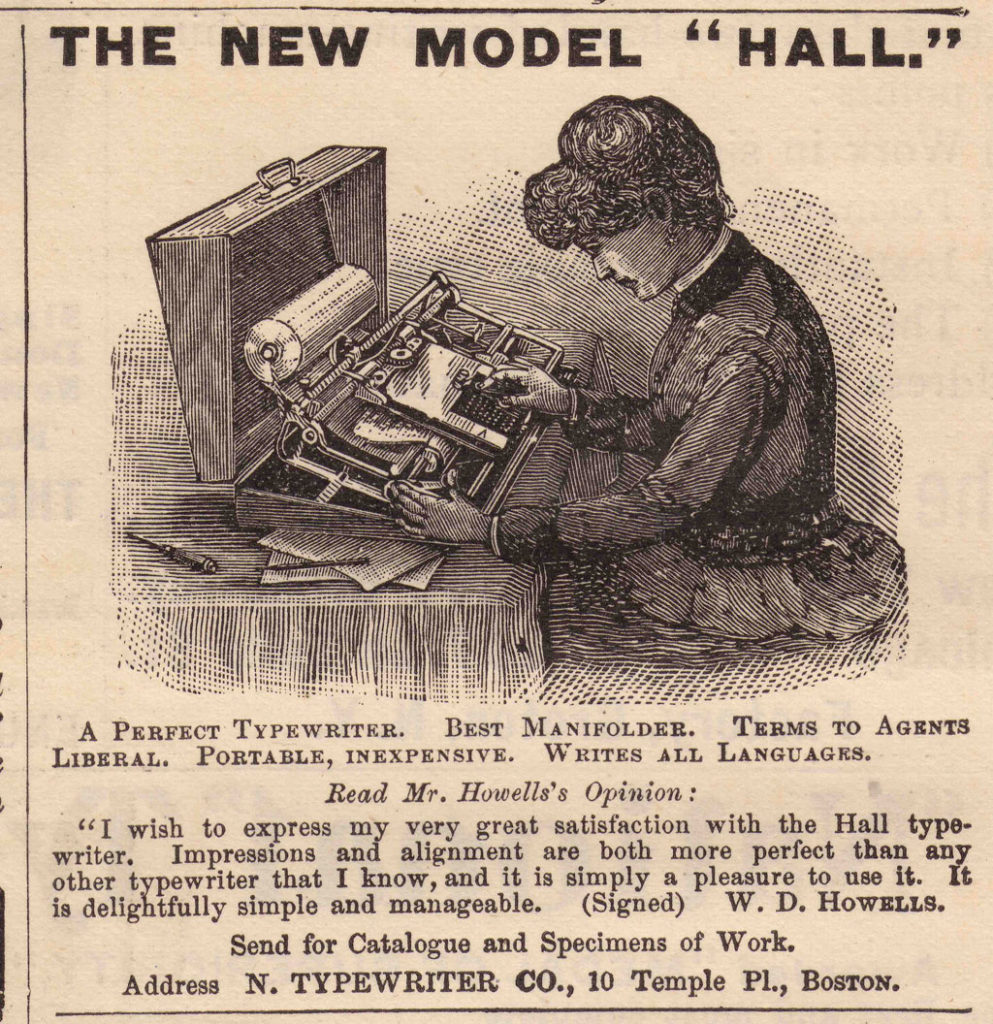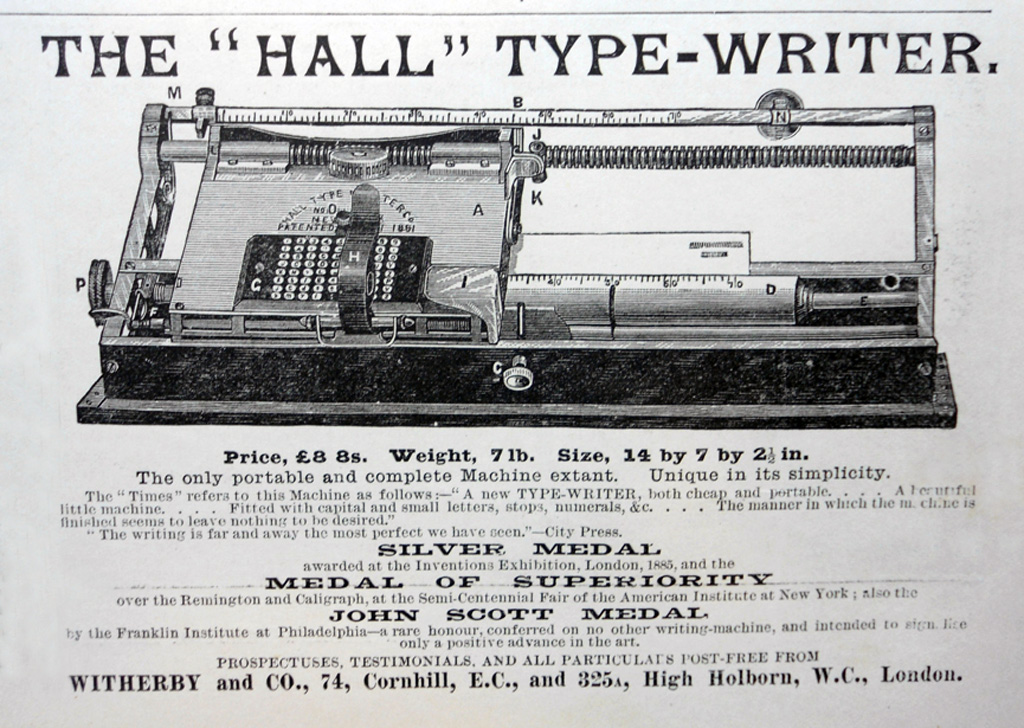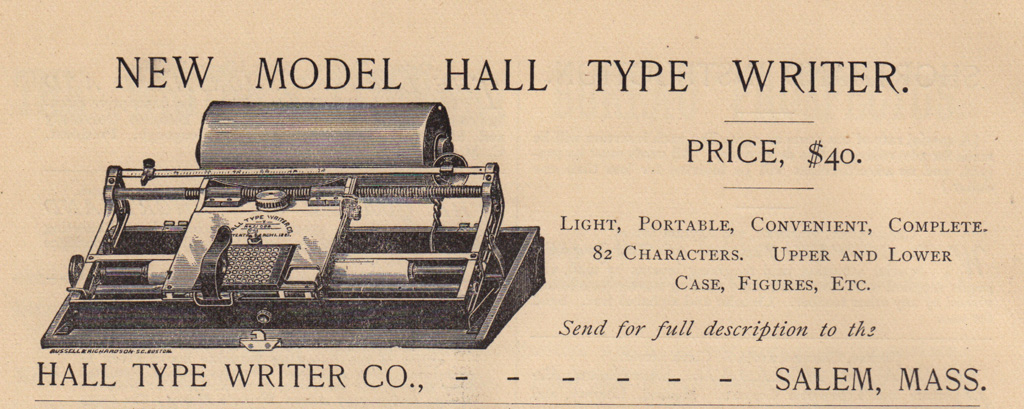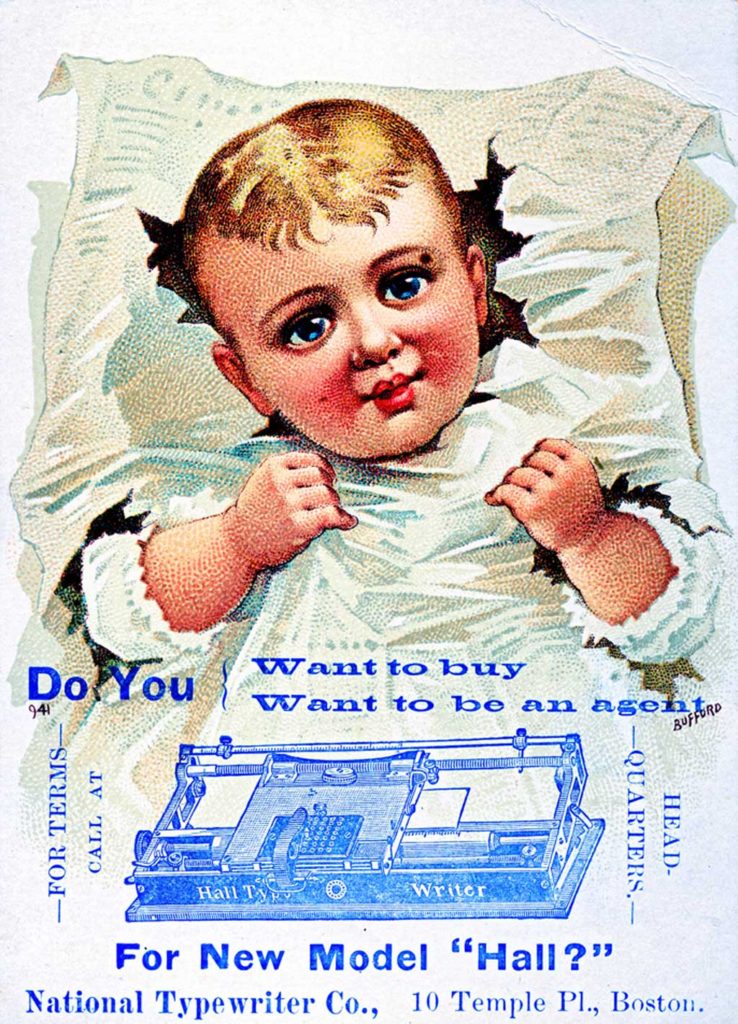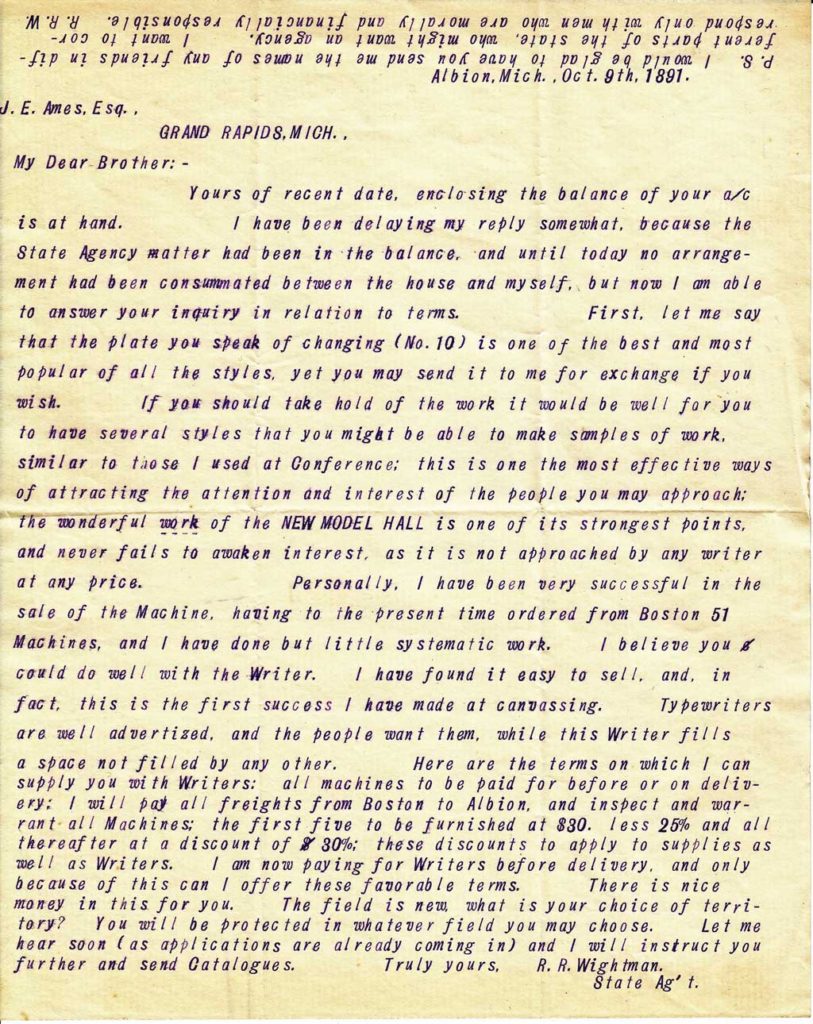Thomas Hall, a Brooklyn engineer, invented this first index typewriter — a typewriter with no keyboard that requires the use of a selector to choose characters when typing. It is housed in a handsome mahogany case with a beautiful brass latch (see below).
Hall’s goals in designing his typewriter are clearly stated in his patent: “The object of my invention is to simplify the structure and reduce the number of parts in type-writing machines; to reduce the size and cost, as well as to render the machine durable and serviceable.”
The Hall originally sold for $40, offering an economical alternative to the $100 keyboard machines; for comparison, a horse-drawn carriage could be bought for $70. At a time when few people typed efficiently with both hands, it would have seemed perfectly reasonable for an operator to pick out characters using one hand.
To select a character, the black handle is moved freely over the small white holes, each representing a different character. A stylus, on the underside of the handle, is then pushed down into the chosen hole. Inside the square carriage, a rubber plate with all the characters molded on its surface has moved into position, and the selected character is pressed through a small opening onto the paper.
The rubber type could be quickly changed to accommodate different fonts and languages.
This is an early example from the New York factory, where it was first manufactured, with all nickel-plated parts.
“THE BEST STANDARD TYPEWRITER IN THE WORLD. Cheap, Portable, No Ink Ribbon, Interchangeable Type in all Languages, Easiest to learn and rapid as any. Agents wanted everywhere.”
“Weighs seven pounds, handily carried like a satchel, can be operated anywhere, in the hotel parlor or on your lap as you travel by rail or steamship.”
